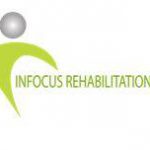My son just fell and hit his head in hockey, does he need to sit in a dark room until the concussion symptoms are gone?
Following a concussion, the “sitting in a dark room” approach is only effective for so long. Concussions, like other sports injuries, should be properly managed and rehabilitated. While complete physical and cognitive rest are the mainstays of concussion care, having a health professional trained in concussion treatment and management guide you through this step-by-step may prove to be invaluable. Recovering from a concussion can be a difficult and frustrating time. Each athlete is affected differently, therefore, each requires individualized care. Management strategies are used to limit the amount of impairment as well as expedite recovery as much as possible. These strategies may include resting strategies and home instruction, school, and/or accommodations, or a return to play protocol. It is important to see a health professional trained in concussion management to guide your child through the recovery process.
My daughter suffered a concussion in gymnastics and she has no more symptoms at rest, can she return back to gymnastics?
Once symptom-free, it is recommended that each athlete undergo a step-wise process of physical exertion testing. Similar to weight training, athletes recovering from a concussion should not skip to 100% exertion from 0% in a short time frame. Physical exertion testing is important not only for physical re-conditioning, but to guard against symptom relapse and help prevent premature return-to-sport. It is well known that concussive symptoms can be aggravated with exercise and even though you may feel well, running, jumping, or stick handling are things that may cause your symptoms return.
I’ve been told I can gradually return to play, how exactly does this work?
The return-to-play process is gradual and is done in stages. If no symptoms are aggravated either during or after each stage exercise session, you may progress to a more difficult workout routine. Eventually you may advance to on-field or on-ice practice and finally full gameplay (with proper medical clearance). At any time, if your symptoms return, you must return to a lower level exertion (or modified activities) depending on the advice of your health professional. All of these exercise sessions should be monitored by a health care professional trained in concussion management, as they will ensure that full return to play happens at the appropriate time.



